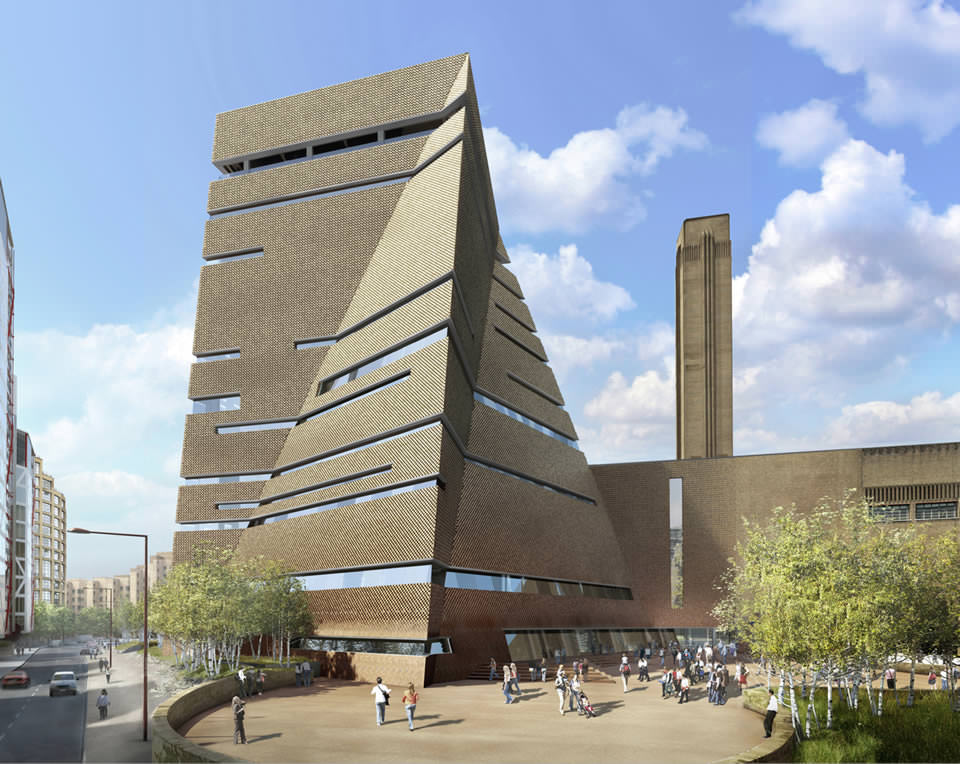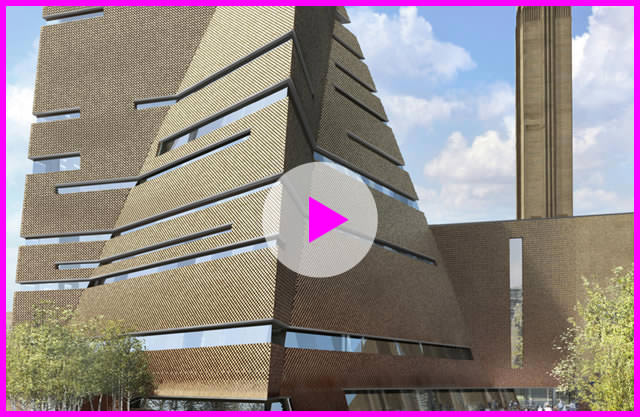-
Cathedral
of Culture(Images courtesy Herzog & de Meuron)

-
In 1994, Tate Gallery, previously known for its focus on British Art, purchased the redundant Bankside power station as a new home in which to house and extend its contemporary art collection. The competition to redesign the building was won by Herzog & de Meuron with an elegantly simple proposal, keeping the existing structure largely intact. The architects were sympathetic to the building’s former use, intelligently combining old with new: so the newly constructed interiors, lined in polished concrete and untreated wood, preserved the industrial charm of the original, whilst lending themselves well to the art gallery experience.
Today, the Tate has become one of the most popular art institutions in the world – thanks to the gallery’s programme, but also perhaps to the architecture too. The reuse of this huge industrial dinosaur as a place for culture has made it an icon for London and a model for post-industrial reinvention in cities worldwide.
This success has led gallery director Nicolas Serota to commission the same architects to build an extension, due for completion in 2016. The almost archaic-looking pyramidal design cues off the original building with its brick-clad façade, yet also acts as a contrasting monumental form: in keeping yet distinctively contemporary.


Video: “Rejoice (Tate Modern).” Director/cutting: Julia Langhof, camera/cutting: Michael Grabowski. This short movie was exclusively produced by students of the Deutsche Film- und Fernsehakademie Berlin (DFFB) for the exhibition “Culture:City” at the Akademie der Künste in Berlin (2013).

-
Search
-
FIND PRODUCTS
PRODUCT GROUP
- Building Materials
- Building Panels
- Building technology
- Façade
- Fittings
- Heating, Cooling, Ventilation
- Interior
- Roof
- Sanitary facilities
MANUFACTURER
- 3A Composites
- Alape
- Armstrong
- Caparol
- Eternit
- FSB
- Gira
- Hagemeister
- JUNG
- Kaldewei
- Lamberts
- Leicht
- Solarlux
- Steininger Designers
- Stiebel Eltron
- Velux
- Warema
- Wilkhahn
-
Follow Us
Tumblr
New and existing Tumblr users can connect with uncube and share our visual diary.
»Intelligence starts with improvisation.«
Yona Friedman
Keyboard Shortcuts
- Supermenu
- Skip Articles
- Turn Pages
- Contents


